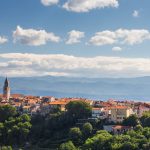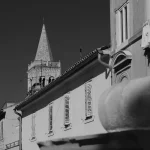We’ve explored many of the dialects, subdialects and indeed languages in their own right as some linguists consider them to be which are spoken across modern Croatia. From the Dubrovnik subdialect (Ragusan) in the extreme south of Dalmatia to Northwestern Kajkavian in areas like Zagorje, the ways in which people speak in this country deviate from what we know as standard Croatian language enormously. That goes without even mentioning much about old Dalmatian, Zaratin, once widely spoken in and around Zadar, Istriot, or Istro-Venetian.
Istria in particular is full of culture, and its rather complex historic relationship with Italy and in particular with the formerly powerful Venice has a lot to answer for in this regard. That brings us to a language that actually has nothing to do with Venetian, and is only spoken by people who call themselves Rumeni or sometimes Rumeri. It can only now be heard in very few rather obscure locations and with less than an estimated 500 speakers of it left, the Istro-Romanian language is deemed to be seriously endangered by UNESCO’s Red Book of Endangered Languages.
Who are the Istro-Romanian people?
The Istro-Romanians are an ethnic group from the Istrian peninsula (but they aren’t necessarily native) and they once inhabited much of it, including parts of the island of Krk. It’s important to note that the term ”Istro-Romanian” itself is a little controversial to many, and most people who identify as such do not use the term, preferring instead to use the names taken from their villages. Those hamlets and small settlements are Letaj, Zankovci, the wider Brdo area, Zeljane, Nova Vas, Jesenovik, Kostrcani and Susnjevica.
Many of them left to begin their lives in either larger Croatian cities or indeed in other countries as the industrialisation of Istria in the then Yugoslavia progressed at a rather rapid pace. Following Istrian modernisation which had enormous amounts of resources pumped into it by the state, the number of Istro-Romanian people began to dwindle rather significantly, until they could only really be found in a handful of settlements.
The origins of the Istro-Romanian people are disputed, with some claiming they came from Romania, and others claiming that they arrived originally from Serbia. Regardless, they have been present in Istria for centuries and despite efforts from both the Romanian and Croatian governments to preserve their culture and language – the Istro-Romanian people are still not classed as a national minitory under current Croatian law.
Back to the Istro-Romanian language
Like many dying languages, the Istro-Romanian language was once much more widely spoken across the Istrian peninsula, more precisely in the nothwestern parts near the Cicarija mountain range. There are two groups of speakers despite the fact that the language spoken by both is more or less absolutely identical, the Vlahi and the Cici, the former coming from the south side of the Ucka mountain, and the latter coming from the north side.
Back in 1921, when the then Italian census was being carried out, 1,644 people claimed they were speakers of the Istro-Romanian language, with that figure having been deemed to actually be around 3,000 about 5 years later. Fast forward to 1998, the number of people who could speak it was estimated to stand at a mere 170 individuals, most of them being bi or trilingual (along with Croatian and Italian).
The thing that will be sticking out like a sore thumb to anyone who knows anything about language families – the fact that this is called a Balkan-Romance language. While it is classified as such, the Istro-Romanian language has definitely seen a significant amount of influence from an array of other languages, with approximately half of the words used drawing their origins from standard Croatian as we know it today. It also draws a few from Venetian, Slovenian, Old Church Slavonic and about 25% or so from Latin.
Istro-Romanian is very similar to Romanian, and to anyone who doesn’t speak either but is familiar with the sound, they could easily be confused. Both the Istro-Romanian language and Romanian itself belong to the Balkan-Romance family of languages, having initially descended from what is known as Proto-Romanian. That said, some loanwords will be obvious to anyone familiar with Dalmatian, suggesting that this ethnic group lived on the Dalmatian coast (close to the Velebit mountain range, judging by the words used) before settling in Istria.
Most of the people who belong to this ethnic group were very poor peasants and had little to no access to formal education until the 20th century, meaning that there is unfortunately very little literature in the Istro-Romanian language to be found, with the first book written entirely in it having been published way back in 1905. Never used in the media, with the number of people who speak it declining at an alarming rate and with Croatian (and indeed Italian) having swamped Istria linguistically, it’s unlikely you’ll ever hear it spoken. Some who belong to this ethnic group who live in the diaspora can speak it, but that is also on a downward trajectory.
This language has been described as the smallest ethnolinguistic group in all of Europe, and without a lot more effort being put into preservation, the next few decades to come will almost certainly result in the complete extinction of the Istro-Romanians and their language.
For more on the Croatian language, dialects, subdialects and history, make sure to check out our dedicated lifestyle section.











